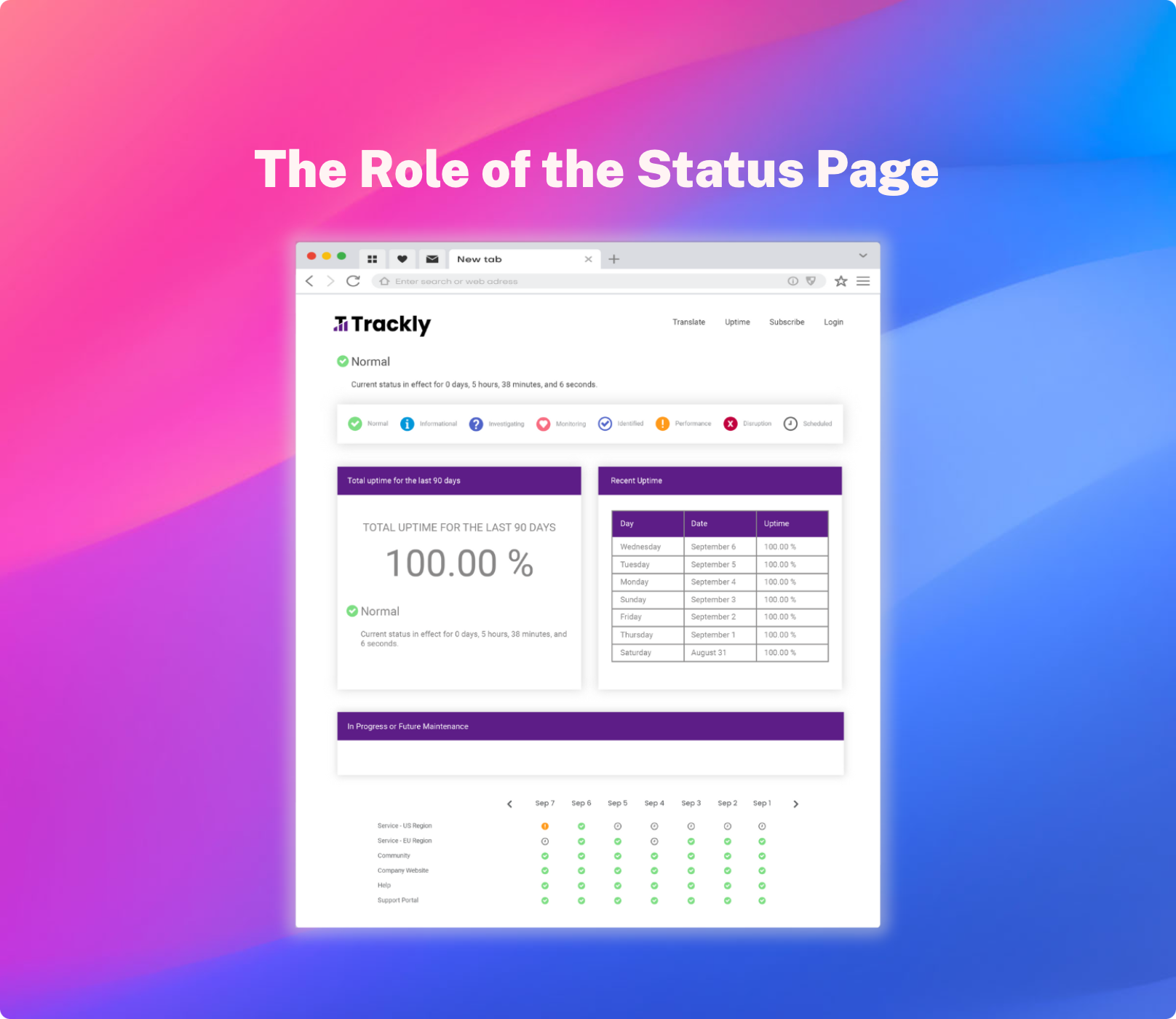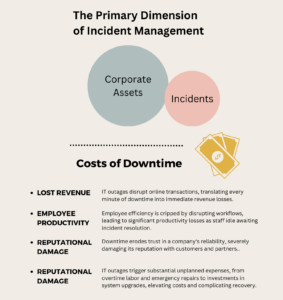In the realm of IT, incidents are inevitable. However, the true test of an organization's resilience lies in its ability to mitigate the impact of these incidents. Traditional incident management focused mainly on reducing downtime, but as we evolve in our approach, it's become evident that minimizing the damage and costs incurred during downtime is equally crucial. StatusCast aims to reduce not only the hours of downtime but also the cost per downtime hour, which means focusing on minimizing lost employee productivity, one of the most significant costs of IT incidents.
How to Reduce the Disruption of IT Incidents
Minimizing the impact of IT incidents is essential for ensuring business continuity, safeguarding company reputation, and reducing financial losses. In the modern work environment, characterized by widespread remote work, the significance of effective incident communication cannot be overstressed. The complex web of dependencies on third-party services in modern tech organizations introduces an additional layer of complexity, where a failure in one service could potentially cascade into widespread disruption for your own business. Leveraging an automated incident communication system is key to supporting a distributed workforce, ensuring all teams are well-informed and able to adapt in the face of outages, enabling them to implement contingencies and stay productive.
Identify the Critical IT Assets and Services
Setting your IT team up for success means to start with a strategy and system that places the fundamental focus on corporate assets instead of on incidents themselves. Every organization has certain assets and services that are indispensable to its operations. Identifying these is the cornerstone of creating an effective crisis plan to safeguard them from the impacts of IT incidents. Understanding the dependencies and significance of these systems helps in prioritizing resources and efforts during an emergency.
Assess the Risks & Develop and Incident Response Plan
A comprehensive risk assessment involves evaluating potential threats and vulnerabilities that could lead to IT incidents. Proactively assessing these risks, and routinely updating this assessment, allows businesses to prepare more effectively for specific scenarios that might arise, ensuring readiness for various types of incidents. An efficient incident response plan is essential. It should outline the key roles, responsible personnel, and procedures to follow to contain, mitigate, and recover from an IT incident. All of these critical incident response tasks should be mapped to an ITSM system that supports these tasks. This plan serves as a strategic roadmap for swift and decisive action in the face of disruptions.
Prioritize Stakeholder Communication
Transparent and regular communication with stakeholders, including employees, customers, and partners, is paramount during an IT incident. A status page serves as an ideal platform for this purpose, offering real-time updates and maintaining transparency. StatusCast, recognized for its robust services in large enterprises and SaaS companies, provides an efficient channel to keep all stakeholders informed.
StatusCast’s Innovative Approach to Incident Management
Incorporating insights from our article, A New Approach To Incident Management, StatusCast’s methodology places a strong emphasis on reducing lost productivity and the overall cost of downtime. Our approach is centered around keeping employees informed about the status of critical services they rely on, as well as reducing the complexities of dependencies, APM & Observability tools, and root causes of the incidents for the IT team. This strategy not only aids in reducing downtime but also in minimizing the disruption and costs incurred during downtime. Below is a high level outline of our incident management approach:
The Core Tenets of Effective Incident Management
At the heart of StatusCast's incident management strategy is a blend of pivotal principles aimed at keeping employees productive and IT proactive in the face of outages. The objective of an organization when systems go down should be to maintain operational continuity and employ a strategic response during IT incidents. Stakeholder communication is central to our approach, ensuring that not just the IT team, but the entire workforce remains active and engaged during disruptions. This proactive communication strategy is akin to navigating through a potential traffic jam with timely updates, steering clear of operational disruptions and maintaining workflow continuity. Complementing this, our Asset First Approach shifts the focus from just incidents to a broader perspective that includes the vital importance of service components. This approach offers a more holistic view of how incidents affect an organization, enabling end-users to better understand and adapt to these disruptions.
Further enhancing our incident management capabilities, we integrate seamlessly with APM and monitoring systems. This integration is crucial in large enterprises where multiple systems, often operating in silos, can create a complex web of alerts and notifications. Our solution centralizes these communications, filtering out irrelevant noise and focusing on actionable alerts. We also incorporate runbooks in our ITSM system, which are vital for streamlining incident management. These runbooks facilitate the creation of content templates, administrative tasks, and workflows, which ease the burden on IT professionals. Additionally, our extensive RCA (Root Cause Analysis) database and comprehensive reporting provide valuable insights for strategic planning. This approach, coupled with our efficient management of shifts, on-call assignments, and escalations, ensures that the right personnel are alerted and involved in timely resolution, further reducing downtime and its associated costs.
In Conclusion
The essence of effective incident management lies in recognizing the need to minimize lost resources and productivity during IT incidents, as well as reducing total downtime. StatusCast's approach, with its focus on continuous productivity and strategic communication, provides a robust framework to support organizations in navigating the complexities of modern IT environments. Our comprehensive incident management, robust status pages, and strategic integrations work together to ensure resilience and operational integrity, safeguarding businesses against the unpredictable nature of IT incidents.







